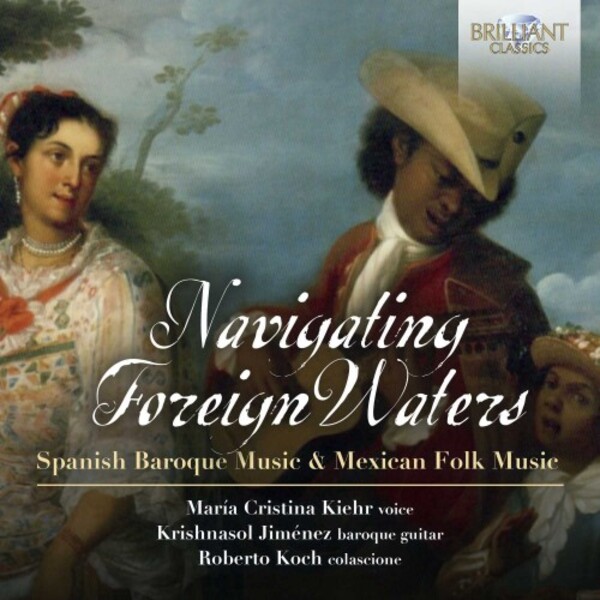
Navigating Foreign Waters: Spanish Baroque Music & Mexican Folk Music
£9.45
In stock - available for despatch within 1 working day
Despatch Information
This despatch estimate is based on information from both our own stock and the UK supplier's stock.
If ordering multiple items, we will aim to send everything together so the longest despatch estimate will apply to the complete order.
If you would rather receive certain items more quickly, please place them on a separate order.
If any unexpected delays occur, we will keep you informed of progress via email and not allow other items on the order to be held up.
If you would prefer to receive everything together regardless of any delay, please let us know via email.
Pre-orders will be despatched as close as possible to the release date.
Label: Brilliant Classics
Cat No: 96205
Format: CD
Number of Discs: 1
Genre: Vocal/Choral
Release Date: 25th June 2021
Contents
Works
CumbeesFandango
Folias Gallegas
Jacaras de la costa
Jacaras por la E
La Jota
Los Impossibles
Tarantelas por la E
Zarambeques o Muecas
Jacaras por la E
Aguanieve
El Gallo
Fandanguito
La Bruja
La Carretera
La Lloroncita
Los Chiles Verdes
Los Juiles
Maria Chuchena
Siquisiri
Artists
Maria Cristina Kiehr (voice)Krishnasol Jimenez (Baroque guitar)
Roberto Koch (colascione)
Works
CumbeesFandango
Folias Gallegas
Jacaras de la costa
Jacaras por la E
La Jota
Los Impossibles
Tarantelas por la E
Zarambeques o Muecas
Jacaras por la E
Aguanieve
El Gallo
Fandanguito
La Bruja
La Carretera
La Lloroncita
Los Chiles Verdes
Los Juiles
Maria Chuchena
Siquisiri
Artists
Maria Cristina Kiehr (voice)Krishnasol Jimenez (Baroque guitar)
Roberto Koch (colascione)
About
Veracruz’s long Gulf of Mexico coastline was home to the principal port of trade between New and Old Spain, where both commercial and cultural exchange took place. In 1776, the Veracruzano guitar professor Antonio Vargas y Guzmán published a guitar method with a section on continuo accompaniment that drew heavily on an existing Spanish treatise, the Resumen de acompañar la parte con la guitarra published in 1714 by Santiago de Murcia.
Imported to Mexico via Veracruz, the Spanish son underwent a series of changes in the New World yet retained its main characteristics. Known as sonecitos del país or sones de la tierra these early Mexican sones were the immediate forerunners of the contemporary sones of the jarocho region.
The son jarocho features the jarana, a five-course guitar, usually strummed, in many ways resembling a baroque guitar, and more broadly this region’s musical practice has preserved many other aspects of Baroque performance practice including the manner of dancing and instrumental techniques.
Error on this page? Let us know here
Need more information on this product? Click here